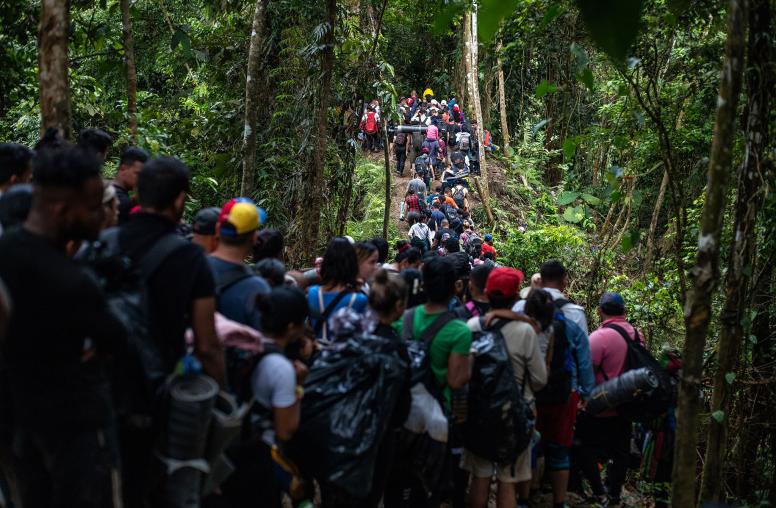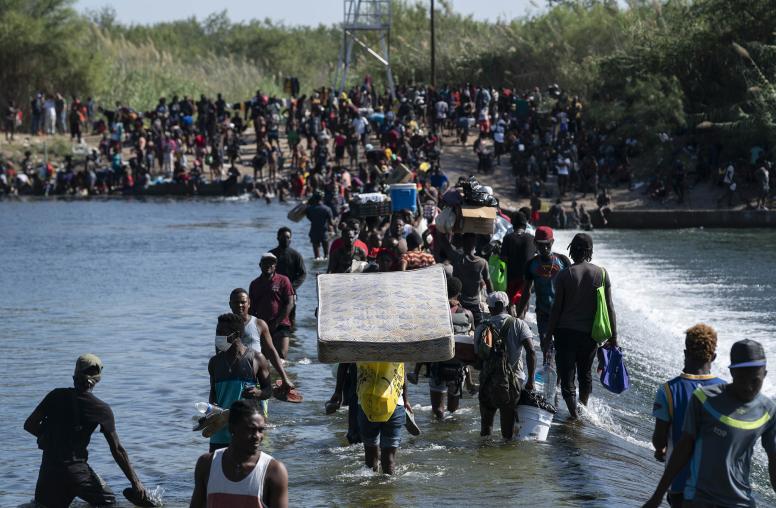Addressing Fragility in a Global Pandemic: Elements of a Successful U.S. Strategy
The Global Fragility Act (GFA), passed by Congress and signed into law in 2019, requires the State Department, USAID, and other agencies to put in place for the first time a comprehensive strategy to address state fragility, violent conflict, and extremism, relying on best practices that are key to more effective and integrated U.S. policy. This report focuses on six key themes in the legislation, drawing on the expertise of leading peacebuilding and development experts to help generate practical solutions for advancing the GFA.
Introduction
Addressing state fragility and violent conflict is one of the central challenges of the modern era. Violent conflicts have risen in number, duration, and intensity since 1990, spurring the spread of violent extremism and one of the largest displacement crises in human history, causing untold human suffering. As a result, the international community has coalesced around the need for new approaches to reduce conflict’s underlying drivers and increase resiliency to shocks. In the United States, this consensus has culminated in the Global Fragility Act (GFA), an ambitious measure signed into law in late 2019 that aims to overhaul the way the United States engages in countries vulnerable to conflict—especially in fragile states, where the social contract between citizens and the state is severed, and societies are fragmented and prone to violence. If successfully implemented, this new framework could begin to transform U.S. policy and assistance in fragile countries and provide an alternative to the multibillion-dollar state-building efforts that have been underway for far too long in places like Afghanistan and Iraq and have few results to show for it.
The Global Fragility Act requires the State Department, U.S. Agency for International Development, and other federal agencies to launch a comprehensive strategy to address fragility and reduce the risks of violence and conflict by targeting its drivers. To better align U.S. policy instruments in support of prevention—including foreign assistance, diplomatic engagement, and security sector assistance—the legislation sets out the roles and responsibilities of each U.S. agency, creating new mechanisms for oversight and coordination. The bill includes unprecedented new congressional authorities to allow policymakers to implement a ten-year preventive strategy that can adapt in response to evolving local conditions, based on close consultations between the legislative and executive branches. The legislation requires agencies to test their initial efforts in a small set of countries and regions, and to report back to Congress every two years not just on their progress, but also on organizational learning.
Adhering to the principles embedded in the GFA—including closer U.S. interagency coordination, deeper integration and burden sharing with international partners on the ground, and more nimble policy and programs that are responsive to in-country conditions—has been an age-old challenge in conflict environments. Executing this new mandate presents enormous difficulties. We should expect setbacks and slow progress. Achieving results will require tackling the bureaucratic, political, and operational obstacles to more fit-for-purpose policies and programs in fragile states, and reinvesting in U.S. civilian capabilities, which have been severely depleted. Because this is not a challenge that the United States can or should tackle alone, it will require reinvigorating U.S. leadership and committing to building coalitions of partners to get the job done.
At the same time, this agenda has gained added urgency in the context of COVID-19 because the fallout from the pandemic will stress countries’ social fabrics in ways that could deepen fragility and exacerbate protracted crises and have devastating consequences for both the world’s most vulnerable populations and international peace and security. Just as donors seek to respond to rapidly increasing health, food, and other emergency needs from the pandemic, it will be critical that this aid is in line with the new strategy and does not inadvertently stoke new tensions.
This report seeks to generate practical policy solutions for overcoming the obstacles to implementing a new U.S. conflict-prevention strategy and country plans. Each article grapples with one of six key themes highlighted in the legislation:
- What new risks and opportunities does the current global strategic environment present for policymakers charged with developing and implementing a new strategy?
- Why is local ownership of conflict prevention initiatives and inclusion so important, and how can the U.S. government maximize country ownership?
- What accountability challenges confront policymakers in these countries, and what mechanisms can help to overcome them?
- What solutions exist to overcome the age-old challenge of interagency coordination in fragile settings, including across both development and security assistance programs?
- What are the benefits of aligning U.S. efforts with those of other international partners, and what are the most effective modalities of such coordination?
- Given the scope of the challenge of defining and measuring progress toward peace in fluid and volatile places, how should policymakers think about monitoring, evaluation and learning?
About the Report
In May, June, and July of 2020, the United States Institute of Peace convened a series of consultations with experts on implementation of the 2019 Global Fragility Act, which called for an interagency initiative to stabilize conflict-affected areas and prevent violence globally. This report examines the key lessons the peacebuilding field has learned about how to support vulnerable countries in preventing conflict and violence, and offers practical policy solutions for how to overcome the obstacles that have plagued past U.S. efforts. It assesses the current global strategic environment for preventing internal conflicts and addresses how to promote local ownership and inclusion, ensure accountability, align U.S. activities across diplomacy and development, establish mechanisms for closer international coordination, and measure progress.
About the Authors
This report was compiled and edited by Corinne Graff, a senior advisor at the United States Institute of Peace and, in 2018 and 2019, a senior policy advisor to and member of the staff of the Task Force on Violent Extremism in Fragile States. The report consists of essays by Susanna P. Campbell, Martha Crenshaw, Amy Potter Czajkowski, Pamina Firchow, Kathleen Kuehnast, Jon Kurtz, Amanda Long, Daniel R. Mahanty, Jonathan Papoulidis, Paul Perrin, Olga Petryniak, Annie Pforzheimer, Patrick W. Quirk, Sarah Rose, Mareike Schomerus, Conor Seyle, and Jodi Vittori.

